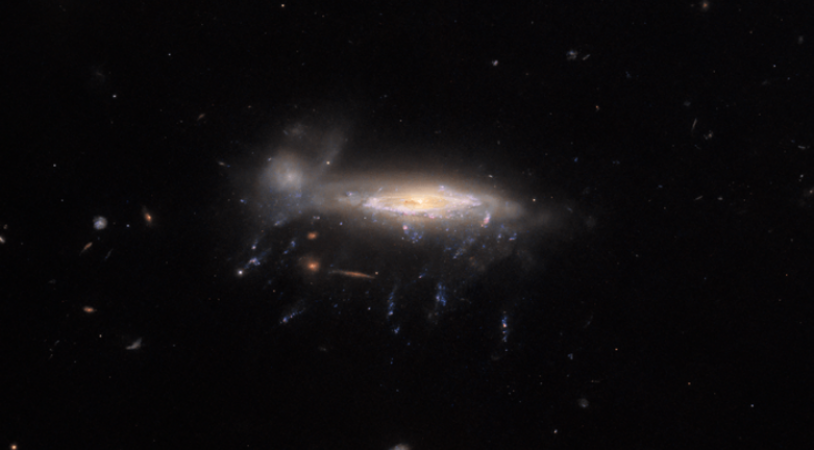
USA: The Hubble Space Telescope of NASA has photographed a fascinating "jellyfish galaxy." Its bright strings of gas, which resemble "floating jellyfish tentacles" and can be seen trailing down from the galaxy's bright core, have earned it the nickname. The cosmic object, known as JO204, is about 600 million light-years away from Earth and is situated in the constellation Sextans.
Since its April 1990 launch, the Hubble telescope has investigated over 40,000 cosmic objects. It has given views that are not possible from the ground, one of which is the most recent discovery of the JO204 galaxy.
In galaxy clusters, one kind of galaxy is known as a jellyfish galaxy. These galaxies have distinctive appearances due to the long tails left behind by the gases being stripped away from them.
Also Read: Now no matter what device you're using to watch YouTube videos
In the image, the jellyfish galaxy occupies the foreground and is encircled by a hazy glow. Only a few other stars and tiny galaxies can be seen against the background of darkness.
The galaxy's spiral arms and bright core can both be seen in the image, along with what appears to be a tilted spiral galaxy. A faint and dim galaxy seems to touch JO204 to the left.
The picture was taken as part of a survey to better understand star formation in harsh environments. Ram pressure stripping is the cause of the gas channels that are streaming downward from JO204 and resemble 'floating jellyfish tentacles'.
Also Read: US tech firm Eventbrite to hire 120 for its development centre in India
The movement of jellyfish galaxies against the intergalactic medium, which fills the spaces between galaxies in a galaxy cluster, causes them to experience ram pressure, according to the European Space Agency (ESA).
The more loosely bound gas is stripped away as a result of the galaxies' intense pressure brought on by this movement. Think of yourself as being in the path of a strong wind gust for clarification.
In this instance, the fluid in motion is the wind. Similar to this, the galaxy's less tightly bound gas is stripped away by the ram pressure, leaving behind "jellyfish's tendrils" as a trail.
Also Read: Twitter now refers to NPR and the BBC as "government-funded" following backlash
According to ESA, "This gas is mainly the colder and denser gas in the galaxy—gas which, when stirred and compressed by the ram pressure, collapses and forms new stars in the beautiful tendrils of the jellyfish."